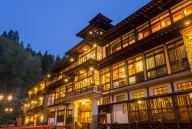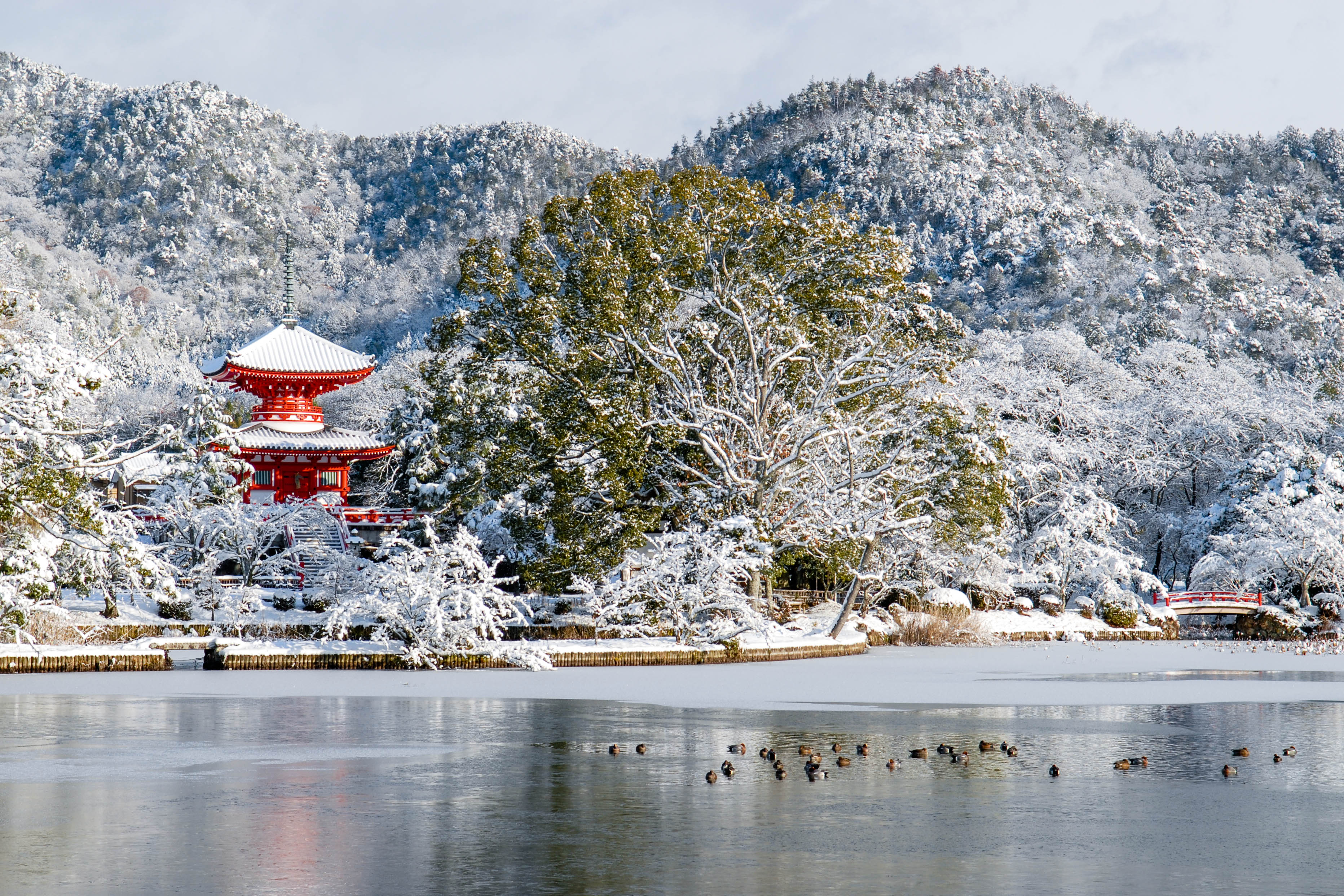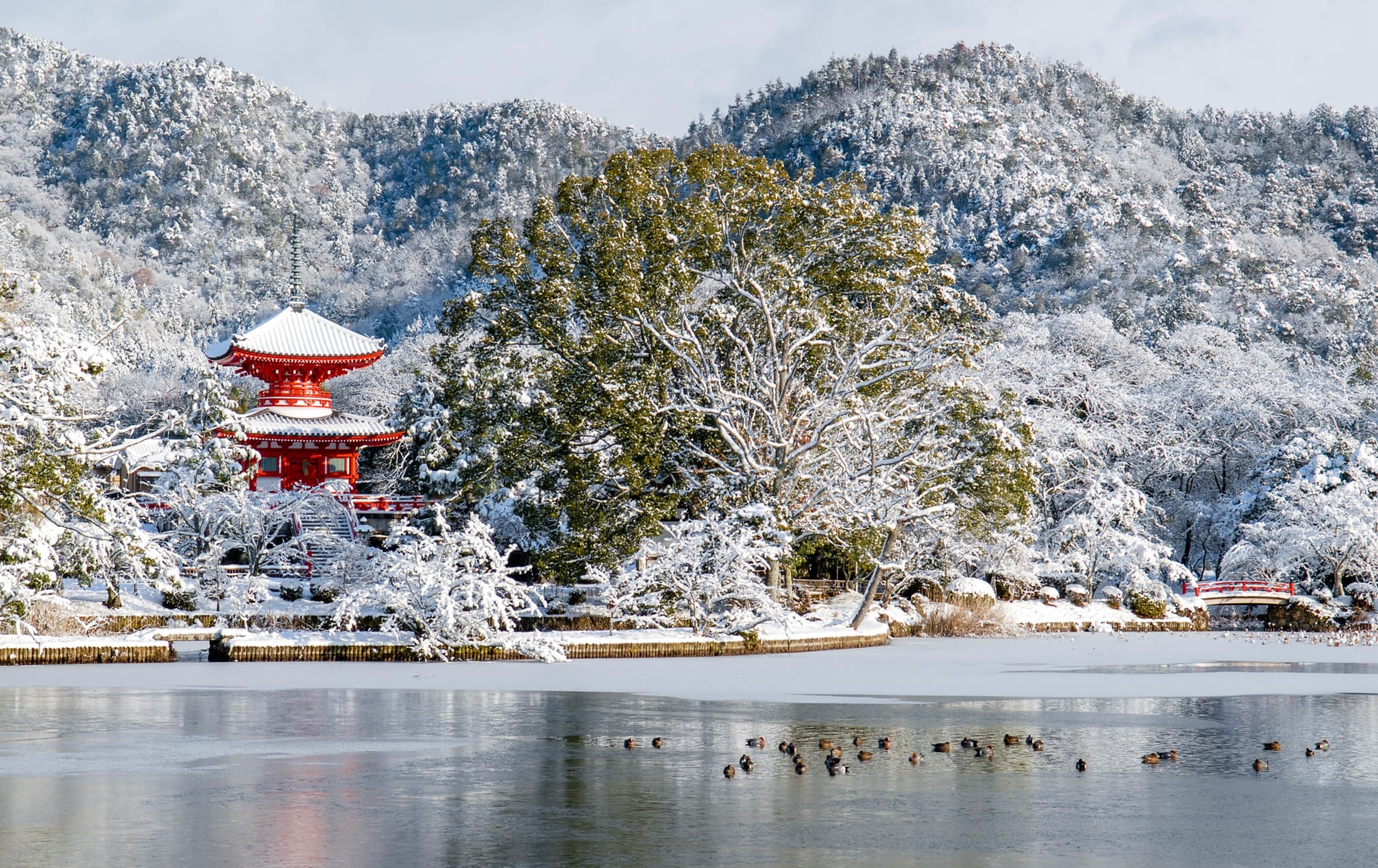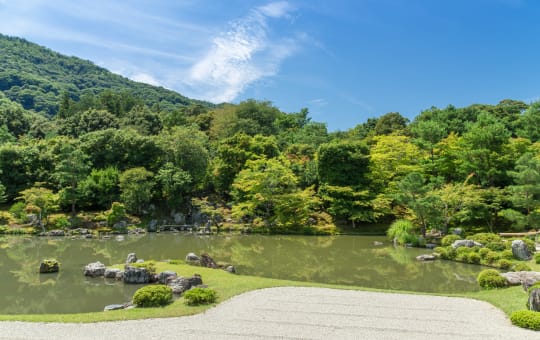©Daikakuji Temple
Früher kaiserliche Villa, heute Tempel
Daikaku-ji, ein Tempel im Stadtteil Ukyo von Kyoto , war ursprünglich eine kaiserliche Villa, wurde aber im Jahr 876 in einen Tempel der buddhistischen Shingon-Schule umgewandelt. Nach einem Feuer in der Edo-Zeit wurden einige Gebäude aus dem 16. Jahrhundert aus dem Kaiserlichen Palast hierhin verlegt.
Nicht verpassen
- Die Mondschau, die jedes Jahr an drei Tagen während des Erntemondes stattfindet
- Der sehenswerte, vom Dongting-See in China inspirierte Garten
- Ein Besuch zum Höhepunkt der Kirschblüten- oder Herbstlaubsaison
Kurzinfo
Daikaku-ji wurde ursprünglich als Kaiservilla für Kaiser Saga erbaut.
Im Tempel wurden während der Bürgerkriege der Namboku-chō-Zeit Friedensgespräche abgehalten.
Anfahrt
Der Tempel lässt sich per Zug und anschließend zu Fuß oder mit dem Taxi erreichen.
Daikaku-ji ist 15 Gehminuten vom JR-Bahnhof Saga-Arashiyama bzw. mit der Keifuku-Linie 20 Gehminuten vom Bahnhof Arashiyama entfernt.
Mitglieder der kaiserlichen Familie als Tempelvorsteher
Mehrere Generationen von Mitgliedern der kaiserlichen Familie hatten das Amt des Tempelvorstehers bis in die frühe Meiji-Ära (1868-1912) inne, so dass der Tempel auch als Wohnsitz der kaiserlichen Familie galt, der auch als Kaiserlicher Palast von Saga bekannt ist.
Der Hauptraum oder „Shinden“ (Palast für den Alltagsgebrauch des Kaisers) wurde von der japanischen Regierung zum Wichtigen Kulturgut ernannt und Osawa-no-Ike-Teich ist auch als Historische Stätte klassifiziert.
Garten am Osawa-no-Ike-Teich
Der Tempelgarten des Osawa-no-Ike-Teichs wurde im chinesischen Chisen-shuyu-Stil gestaltet. Das deutet darauf hin, dass er von einem Boot aus betrachtet werden sollte. Der große Teich neben dem Garten ist der älteste künstlich angelegte Teich Japans.
Shakyo als Weg zur Erleuchtung
Heute zieht der Daikaku-ji als Zentrum für das Kopieren des Han'nya-Shingyo (Herz-Sutra), eines wichtigen buddhistischen Sutras, viele Gläubige an.
Die Praxis des Sutra-Kopierens wird Shakyo genannt und wurde von Kobo Daishi eingeführt. Einer der Tempelschätze ist eine Kopie des Sutra, von dem es heißt, dass es von Kaiser Saga höchstselbst geschrieben wurde.
Japanisches Blumenarrangement
Die Saga Goryu Schule des traditionellen japanischen Blumenarrangements, auch als Ikebana bekannt, hat ihren Sitz im Daikakuji. Die Schule bewahrt ihren historischen Status und ihre Traditionen, nimmt aber gleichzeitig moderne Aspekte auf, wodurch sie Jahr für Jahr an Popularität gewinnt. Jedes Jahr wird im Tempel ein Blumenfest abgehalten.













































